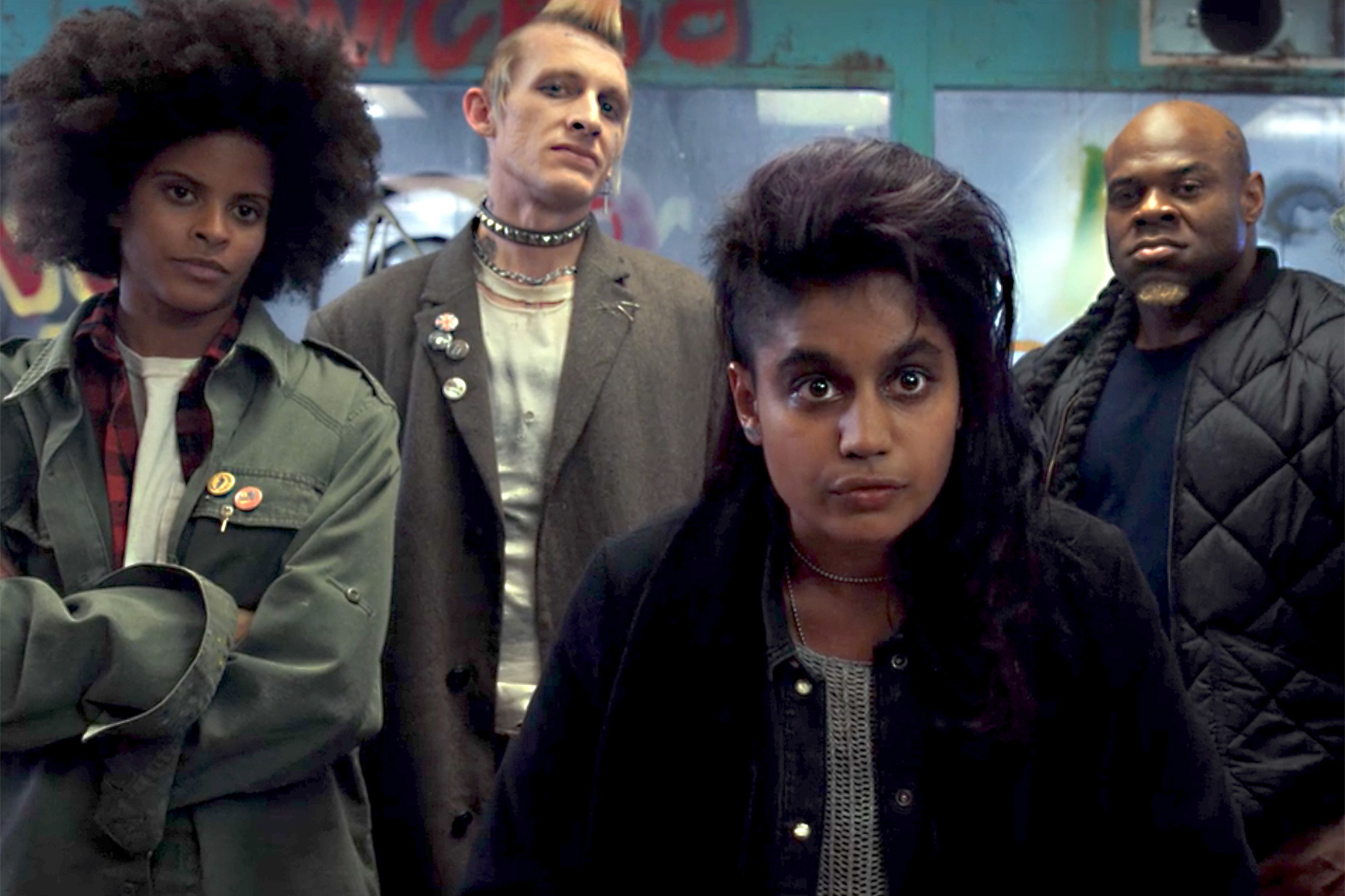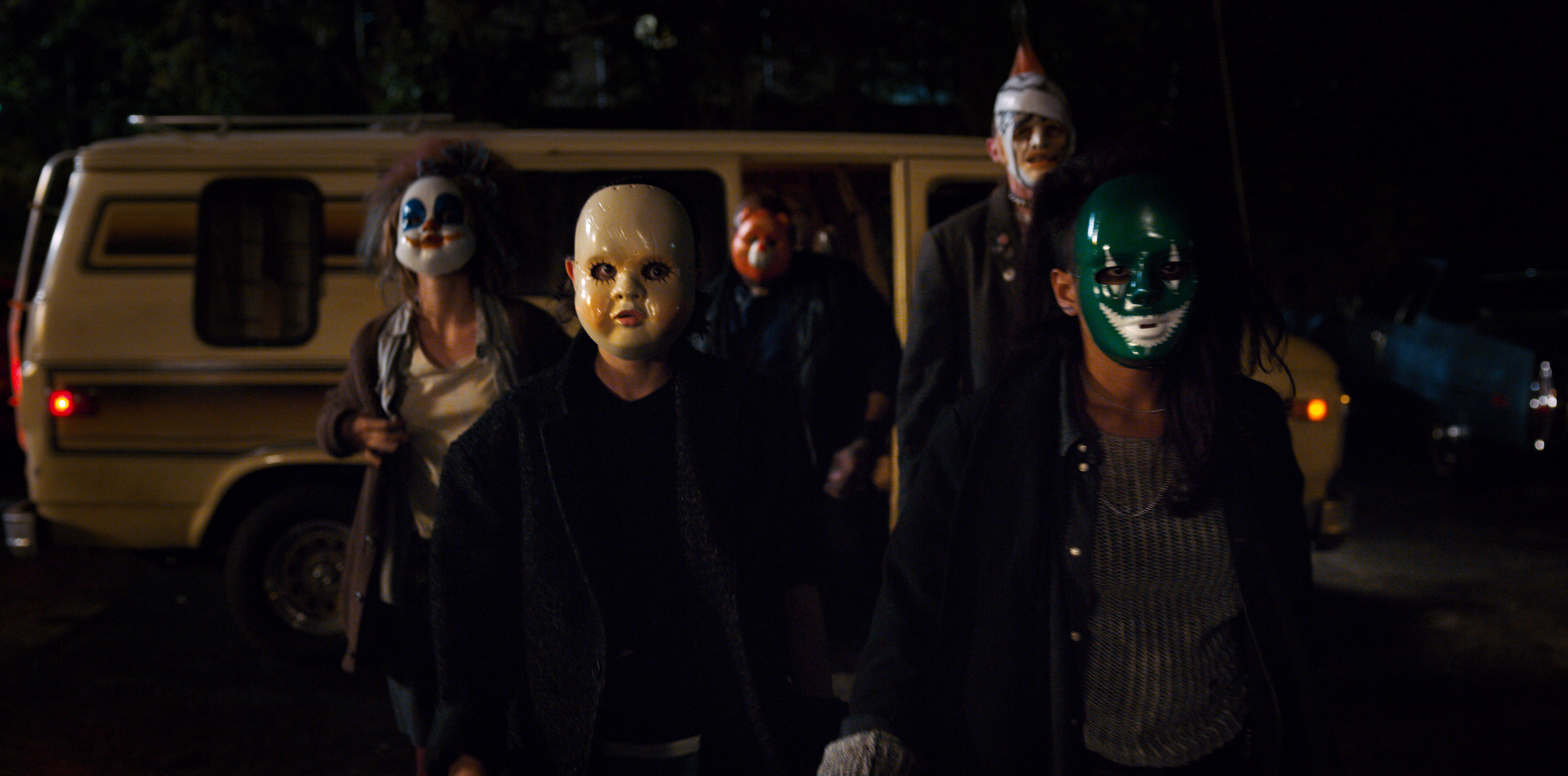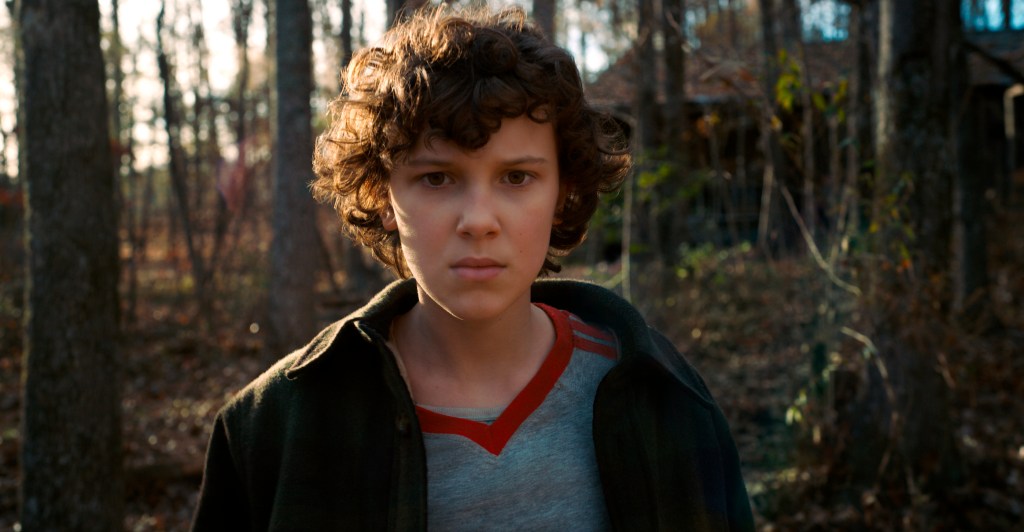By now, if you’ve wanted that desperately to watch Stranger Things 2, you’ve done so. The seventh and bottle episode, The Lost Sister, hasn’t exactly been met with unanimous praise, though. It takes a break from the overarching storylines of the rest of the series, diverting to follow telekinetic nose-bleeder Eleven as she runs away from home to Chicago to find her “sister” from Hawkins Lab: we see her make friends with a bunch of punks, get a bitchin’ makeover and seek violent revenge on her former abusers. It’s been labelled “divisive”, though it’s probably more accurate to say that fans and critics alike are calling it the Worst. Episode. Ever. But even as it makes you wince, The Lost Sister raises interesting questions about identity, teenage rebellion and coping with a deeply traumatic childhood.
To be fair, the episode doesn’t get off to the best start. Around eight minutes in, Eleven walks into an abandoned warehouse to find four people huddling around a fire that burns in a hole-ridden tin drum. They are punks. Or, to put it more accurately, they look like the Getty stock image for “punk”. They’re what a disgruntled 1970s war general would dream up if he was asked to draw four punks: dressed in ripped tees and badge-strewn blazers, with streaked eyeliner running down cheeks and gravity-defying levels of backcombing. One has a two-foot tall mohawk as stiff as his characterisation. As Eleven approaches him, he actually says, word for word, “Well, well, well, what do we have here?” like a Wicked Witch of the West who got dressed at Sex in 1975. “What are those, overalls?” asks another. “There aren’t any cows to milk here, kid,” an emaciated Harley Quinn lookalike deadpans. “Go on back to the farm now.” In the background, some graffiti reads simply, “PUNK”.
Videos by VICE
It’s a cringeworthy scene, leaning heavily on cardboard stereotypes rather than a genuine exploration of a subculture. But, intentionally or not, it does effectively communicate a child’s idea of what “scary punks” might look like. Eleven is alone in a strange new city, with an even less developed sense of identity than the average 13-year-old girl. Suffocated by a childhood and adolescence behind locked doors, she’s both thrilled and terrified by a more rebellious life. It’s as though these bizarre, cartoonish people have stepped out of her dreams, or nightmares. That feeling only intensifies when we realise that the ringleader of the gang, Kali, Eleven’s “sister”, has put this band of misfits together to find and seek violent revenge on the men who experimented on her. It’s the caricatured opposite of her own reaction to the violent abuse she has experienced so far: to retreat into childhood, hide and stay safe. So, of course, she gives it a go.
And so, as with all stories of teenage rebellion, there is a makeover scene. There’s no practical need for Eleven to adopt the fashions of her new gang, and the writers of Stranger Things 2 don’t even bother to manufacture one, jumping straight into a montage of eyeshadow application and hair combing without missing a beat. The new, alternative Eleven – with her curls slicked back and dark, smoky eyes – looks, honestly, a little awkward. Her new clothes sit weirdly on her, baggy in the wrong way, and she still stands out as a child among middle-aged criminals. It’s hardly a Sandy-from- Grease transition: just as she did in her last makeover, and as hundreds around the world did impersonating her, she looks like a kid in a Halloween costume.

But perhaps that awkwardness is precisely the point. Like Lindsay’s ill-fitting army jacket in Freaks and Geeks, or Lane impulsively dying her hair purple (and then back again) in Gilmore Girls, TV has often understood that there’s an anxiety and gracelessness to the teenage search for a “cooler” identity that’s different to the ugly duckling transformations of Hollywood movies. In 2002, my mother rightly despaired at my deeply ill-judged attempts to look like Avril Lavigne, reminding me that Avril didn’t actually dress entirely in her brother’s old shirts and paisley bandanas. Like most kids trying out a new look for the first time, Eleven can’t quite pull it off.
It seems unlikely from the start that Eleven will find a new identity in generous helpings of hair pomade, or a new home with five walking clichés instead of the rounded human beings she knows back in Hawkins. But the real obstacle appears in their different approaches to coping with their shared trauma. When Eleven realises Kali and her friends are hunting down and killing Hawkins Lab agents, she is scared but desperate to prove herself. “I’m a fighter,” she insists. “I’ve killed.”
When it comes down to it, Eleven struggles to carry out the acts of violence Kali sees as the appropriate punishments for her torturers, and stops Kali from killing a Hawkins scientist while his children cower in the next room. This nods to a larger, arguably more conservative message behind Stranger Things 2: there’s a healthy dose of ‘ Government agents perpetrating systematic abuses against vulnerable children are people too!!’ that is definitely Not Punk. But Eleven’s realisation that the vigilante justice of Kali and her friends is too extreme for her is significant because it shows her testing her own limits through a site of rebellion. It’s a story we’ve seen countless times before – I think of Stranger Things‘ very own Winona Ryder pulling back from JD’s exciting violent streak at the last minute in Heathers.
As for many kids discovering an alternative scene, Eleven’s flirtation with even this shallow imagining of rock ‘n’ roll anarchy provides her with a moral gymnasium. Her experience with Kali allows her to discover she can develop her own code to live by, somewhere in between authoritarian rulebook and rebellious chaos. She moves from childish excitement at the prospect of breaking rules for the sake of it, to fantasies of being a “fighter” who brings retribution on those that have genuinely wronged her, to a more nuanced awareness of her position as both a warrior who can help others, and a child who needs the love and protection of her friends and family.

As you’d probably hope from an episode about rock rebellion, The Lost Sister’s musical cues signpost these stages in Eleven’s understanding. The first is aggressively on the nose: Bon Jovi’s “Runaway” plays as Eleven steps off the bus in Chicago with a satisfied smile on her face. Get it? Because she IS the runaway! Eleven is breaking free of patriarchal authority, she’s “Daddy’s girl” learning fast. Quite possibly unintentionally, the sheer obviousness of the choice reminds us how superficial the figure of the disobedient runaway is, and how little it suits Eleven’s much more substantial character. We’re hit over the head by those cheesy, defiant guitars so hard that we know Eleven will inevitably give up this phase and return to Hawkins. It’s just a question of when.
The next is a more interesting choice: the Runaways’ “Dead End Justice”. A song that fantasises about getting vigilante justice on patriarchal abusers, it’s the only genuine link this episode has to punk rock. The lyrics rage against a corrupt justice system, police brutality and cycles of violence, one minute snarling, “You won’t believe what I can do to you,” and the next wailing, “All the pain that I feel makes me feel mean / It’s so sad and crazy here I think I’m gonna cry.” While the writers use it as a generic edgy soundtrack to the fun and frivolous makeover scene, the track is a more appropriate mirror for Eleven’s later balancing act between a hard-faced thirst for revenge and moments of keen empathy and vulnerability.
But maybe the weirdest, most unusual option is the episode’s final, triumphant song: “Birds Fly (Whisper to a Scream)” by short-lived British band The Icicle Works. A thundering New Romantic anthem, it feels triumphant and epiphanous, and so perfect as a closing number – but its lyrics speak of youthful confusion and the struggle to find one’s voice. “We are, we are, we are,” the chorus begins confidently, before trailing off into “children / Finding our way around indecision”. In that sense, it perfectly scores that strange moment of discovering you knew even less than you thought you did, but it feeling like progress. And that’s exactly where Eleven ends up at the end of The Lost Sister: back where she started, more of a child than ever, and somehow all the wiser for it.
It’s easy to dismiss this conveniently episode-length chapter of Eleven’s as just that: an embarrassing and melodramatic diversion from the real story. But isn’t that how all teenage phases look from the outside, even as they shape us forever? It’s undoubtedly clumsy, but The Lost Sister ultimately shows a girl learning how to use her moral agency as well as her psychokinetic power, choosing her own coping mechanisms for her traumatic childhood and deciding what kind of person she wants to be.
You can find Anna on Twitter.
More
From VICE
-

Francesco Carta fotografo/Getty Images -

Darrin Klimek/Getty Images -

Illustration by Reesa. -

Screenshot: Aerial_Knight/Fer Factor
